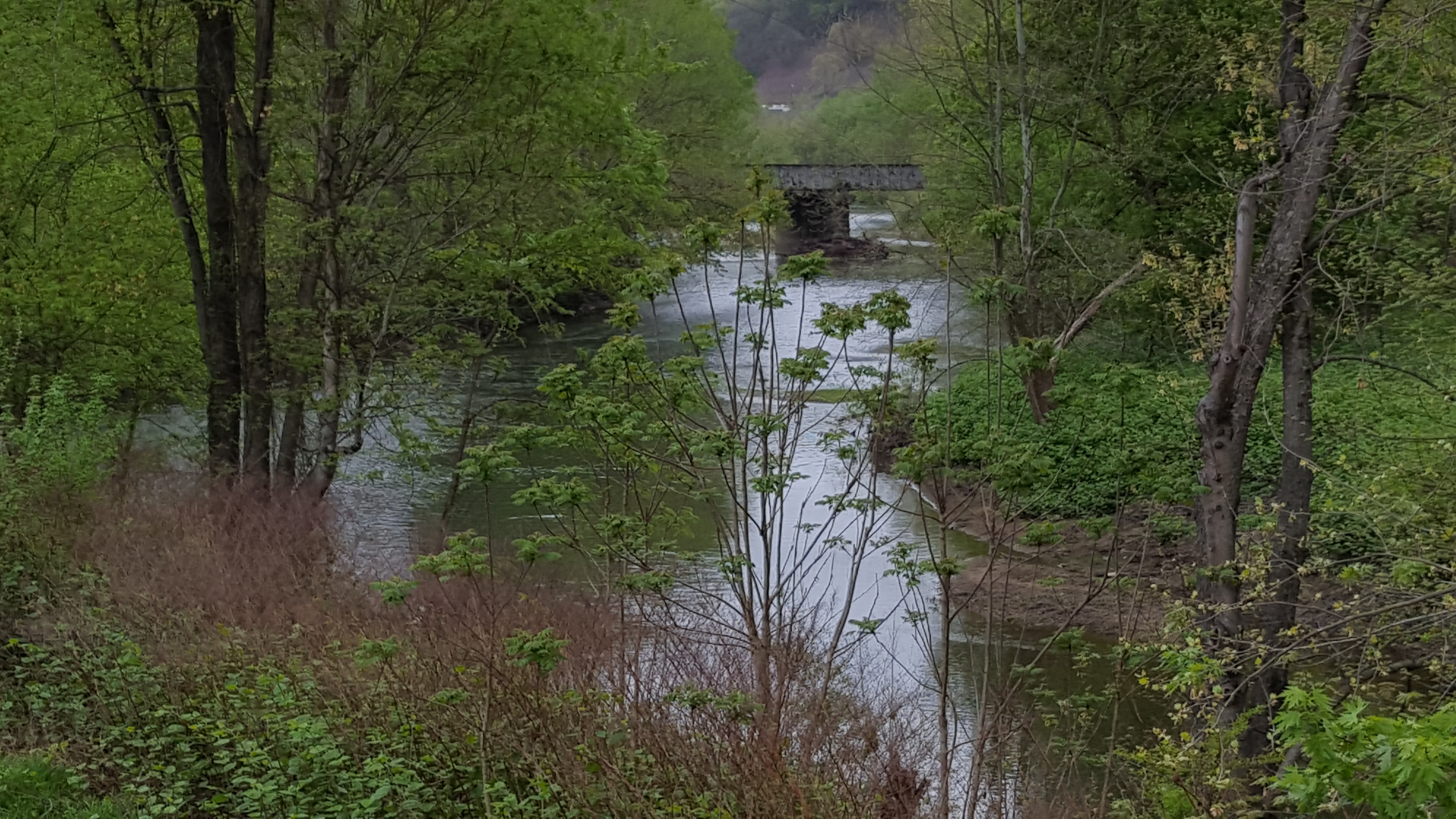|
John McArthur (general)
John McArthur (November 17, 1826 – May 15, 1906) was a Union general during the American Civil War. McArthur became one of the ablest Federal commanders in the Western Theater.Daniel, p. 221. Early life McArthur was born in Erskine, Scotland. He learned to be a blacksmith and emigrated to the United States at age 23 and settled in Chicago. He was the proprietor of the Excelsior Iron Works.Eicher, p. 370. He also served in the Chicago Highland Guards militia unit. Civil War Following the outbreak of the Civil War, McArthur was appointed colonel of the 12th Illinois Volunteer Infantry. Shortly after, he was elevated to command the 1st Brigade in Brig. Gen. Charles F. Smith's division and saw action at the Battle of Fort Donelson. Even though Smith's division was deployed on the left flank of the Union line, McArthur's brigade was detached to John A. McClernand's division to extend the right flank toward the Cumberland River. McArthur's brigade was never positioned cor ... [...More Info...] [...Related Items...] OR: [Wikipedia] [Google] [Baidu] |
Erskine
Erskine (, sco, Erskin, gd, Arasgain) is a town in the council area of Renfrewshire, and historic county of the same name, situated in the West Central Lowlands of Scotland. It lies on the southern bank of the River Clyde, providing the lowest crossing to the north bank of the river at the Erskine Bridge, connecting the town to Old Kilpatrick in West Dunbartonshire. Erskine is a commuter town at the western extent of the Greater Glasgow conurbation, bordering Bishopton to the west and Renfrew, Inchinnan, Paisley and Glasgow Airport to the south. Originally a small village settlement, the town has expanded since the 1960s as the site of development as an overspill town, boosting the population to over 15,000. In 2014, it was rated one of the most attractive postcode areas to live in Scotland. History Archaeological evidence states that agricultural activity took place within the area as far back as 3000 BC and it has been inhabited by humans since 1000 BC. The first ... [...More Info...] [...Related Items...] OR: [Wikipedia] [Google] [Baidu] |
Second Battle Of Corinth
The second Battle of Corinth (which, in the context of the American Civil War, is usually referred to as the Battle of Corinth, to differentiate it from the siege of Corinth earlier the same year) was fought October 3–4, 1862, in Corinth, Mississippi. For the second time in the Iuka-Corinth Campaign, Union Maj. Gen. William Rosecrans defeated a Confederate army, this time one under Maj. Gen. Earl Van Dorn. After the Battle of Iuka, Maj. Gen. Sterling Price marched his army to meet with Van Dorn's. The combined force, known as the Army of West Tennessee, was put under the command of the more senior Van Dorn. The army moved in the direction of Corinth, a critical rail junction in northern Mississippi, hoping to disrupt Union lines of communications and then sweep into Middle Tennessee. The fighting began on October 3 as the Confederates pushed the U.S. Army from the rifle pits originally constructed by the Confederates for the siege of Corinth. The Confederates explo ... [...More Info...] [...Related Items...] OR: [Wikipedia] [Google] [Baidu] |
Army Of The Tennessee
An army (from Old French ''armee'', itself derived from the Latin verb ''armāre'', meaning "to arm", and related to the Latin noun ''arma'', meaning "arms" or "weapons"), ground force or land force is a fighting force that fights primarily on land. In the broadest sense, it is the land-based military branch, service branch or armed service of a nation or country. It may also include aviation assets by possessing an army aviation component. Within a national military force, the word army may also mean a field army. In some countries, such as France and China, the term "army", especially in its plural form "armies", has the broader meaning of armed forces as a whole, while retaining the colloquial sense of land forces. To differentiate the colloquial army from the formal concept of military force, the term is qualified, for example in France the land force is called ''Armée de terre'', meaning Land Army, and the air and space force is called ''Armée de l'Air et de l’Espac ... [...More Info...] [...Related Items...] OR: [Wikipedia] [Google] [Baidu] |
Richard J
Richard is a male given name. It originates, via Old French, from Old Frankish and is a compound of the words descending from Proto-Germanic ''*rīk-'' 'ruler, leader, king' and ''*hardu-'' 'strong, brave, hardy', and it therefore means 'strong in rule'. Nicknames include " Richie", "Dick", " Dickon", " Dickie", " Rich", " Rick", " Rico", " Ricky", and more. Richard is a common English, German and French male name. It's also used in many more languages, particularly Germanic, such as Norwegian, Danish, Swedish, Icelandic, and Dutch, as well as other languages including Irish, Scottish, Welsh and Finnish. Richard is cognate with variants of the name in other European languages, such as the Swedish "Rickard", the Catalan "Ricard" and the Italian "Riccardo", among others (see comprehensive variant list below). People named Richard Multiple people with the same name * Richard Andersen (other) * Richard Anderson (other) * Richard Cartwright (disambiguat ... [...More Info...] [...Related Items...] OR: [Wikipedia] [Google] [Baidu] |
Cumberland River
The Cumberland River is a major waterway of the Southern United States. The U.S. Geological Survey. National Hydrography Dataset high-resolution flowline dataThe National Map, accessed June 8, 2011 river drains almost of southern Kentucky and north-central Tennessee. The river flows generally west from a source in the Appalachian Mountains to its confluence with the Ohio River near Paducah, Kentucky, and the mouth of the Tennessee River. Major tributaries include the Obey, Caney Fork, Stones, and Red rivers. Although the Cumberland River basin is predominantly rural, there are also some large cities on the river, including Nashville and Clarksville, both in Tennessee. Also, the river system has been extensively altered for flood control. Major dams impound areas of both the main stem and many of its important tributaries. Geography Its headwaters are three separate forks that begin in Kentucky and converge in Baxter, KY, located in Harlan County. Martin's Fork st ... [...More Info...] [...Related Items...] OR: [Wikipedia] [Google] [Baidu] |
John A
Sir John Alexander Macdonald (January 10 or 11, 1815 – June 6, 1891) was the first prime minister of Canada, serving from 1867 to 1873 and from 1878 to 1891. The dominant figure of Canadian Confederation, he had a political career that spanned almost half a century. Macdonald was born in Scotland; when he was a boy his family immigrated to Kingston in the Province of Upper Canada (today in eastern Ontario). As a lawyer, he was involved in several high-profile cases and quickly became prominent in Kingston, which elected him in 1844 to the legislature of the Province of Canada. By 1857, he had become premier under the colony's unstable political system. In 1864, when no party proved capable of governing for long, Macdonald agreed to a proposal from his political rival, George Brown, that the parties unite in a Great Coalition to seek federation and political reform. Macdonald was the leading figure in the subsequent discussions and conferences, which resulted in th ... [...More Info...] [...Related Items...] OR: [Wikipedia] [Google] [Baidu] |
Charles Ferguson Smith
Charles Ferguson Smith (April 24, 1807 – April 25, 1862) was a career United States Army officer who served in the Mexican–American War and as a Union General in the American Civil War. Early life and career Charles Ferguson Smith was born in Philadelphia, Pennsylvania, the son of Samuel Blair Smith, an army surgeon and a grandson of the celebrated Presbyterian minister Rev. John Blair Smith. He graduated from the United States Military Academy in 1825, and was commissioned a second lieutenant in the 2nd U.S. Artillery. As he rose slowly through the ranks of the peacetime army, he returned to West Point as an instructor and was appointed Commandant of Cadets as a first lieutenant, serving in that position from 1838 to 1843. As an artillery battalion commander he distinguished himself in the Mexican–American War, serving under both Zachary Taylor and Winfield Scott, at Palo Alto, Resaca de la Palma, Monterrey, and Churubusco. He received brevet promotions from major thr ... [...More Info...] [...Related Items...] OR: [Wikipedia] [Google] [Baidu] |
Colonel (United States)
The colonel () in the United States Army, Marine Corps, Air Force and Space Force, is the most senior field-grade military officer rank, immediately above the rank of lieutenant colonel and just below the rank of brigadier general. Colonel is equivalent to the naval rank of captain in the other uniformed services. By law, an officer previously required at least 22 years of cumulative service and a minimum of three years as a lieutenant colonel before being promoted to colonel. With the signing of the National Defense Authorization Act of 2019 (NDAA 2019), military services now have the authorization to directly commission new officers up to the rank of colonel. The pay grade for colonel is O-6. When worn alone, the insignia of rank seen at right is worn centered on headgear and fatigue uniforms. When worn in pairs, the insignia is worn on the officer's left side while a mirror-image reverse version is worn on the right side, such that both of the eagles' heads fac ... [...More Info...] [...Related Items...] OR: [Wikipedia] [Google] [Baidu] |
Militia
A militia () is generally an army or some other fighting organization of non- professional soldiers, citizens of a country, or subjects of a state, who may perform military service during a time of need, as opposed to a professional force of regular, full-time military personnel; or, historically, to members of a warrior-nobility class (e.g. knights or samurai). Generally unable to hold ground against regular forces, militias commonly support regular troops by skirmishing, holding fortifications, or conducting irregular warfare, instead of undertaking offensive campaigns by themselves. Local civilian laws often limit militias to serve only in their home region, and to serve only for a limited time; this further reduces their use in long military campaigns. Beginning in the late 20th century, some militias (in particular officially recognized and sanctioned militias of a government) act as professional forces, while still being "part-time" or "on-call" organizations. For ins ... [...More Info...] [...Related Items...] OR: [Wikipedia] [Google] [Baidu] |
Chicago Highland Guards
(''City in a Garden''); I Will , image_map = , map_caption = Interactive Map of Chicago , coordinates = , coordinates_footnotes = , subdivision_type = Country , subdivision_name = United States , subdivision_type1 = State , subdivision_type2 = Counties , subdivision_name1 = Illinois , subdivision_name2 = Cook and DuPage , established_title = Settled , established_date = , established_title2 = Incorporated (city) , established_date2 = , founder = Jean Baptiste Point du Sable , government_type = Mayor–council , governing_body = Chicago City Council , leader_title = Mayor , leader_name = Lori Lightfoot ( D) , leader_title1 = City Clerk , leader_name1 = Anna Valencia ( D) , unit_pref = Imperial , area_footnotes = , area_tot ... [...More Info...] [...Related Items...] OR: [Wikipedia] [Google] [Baidu] |






